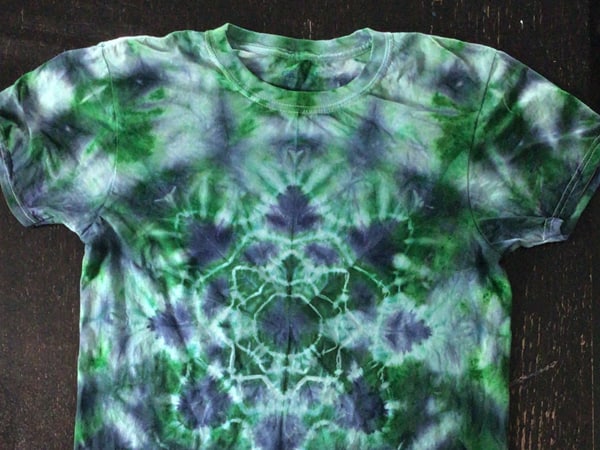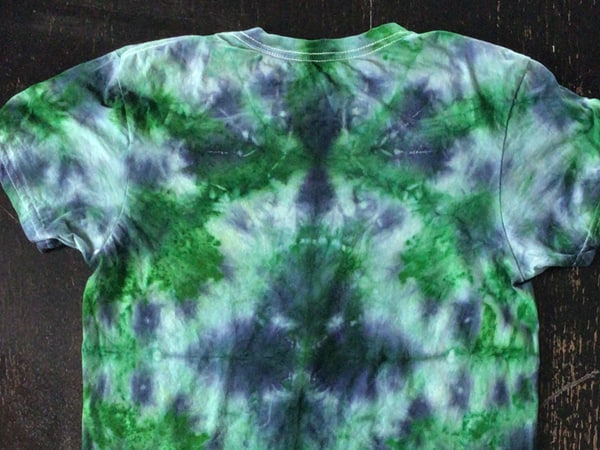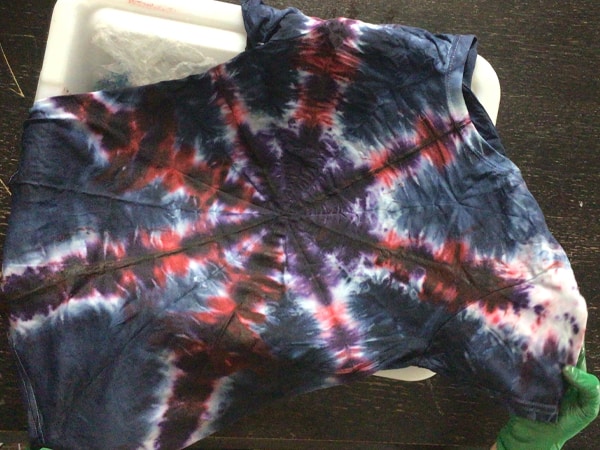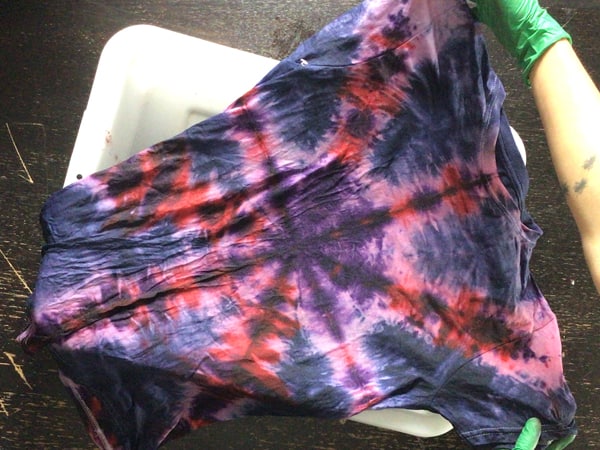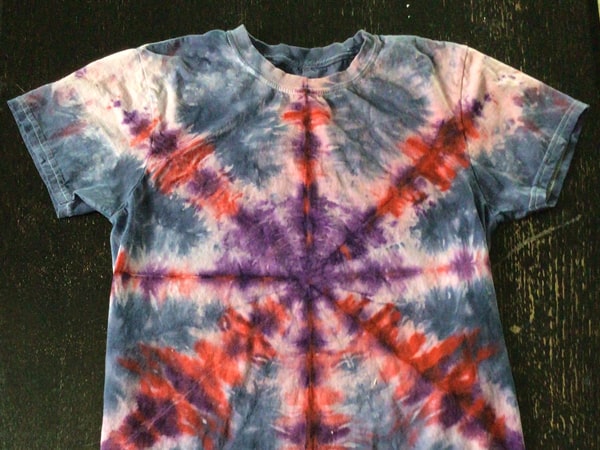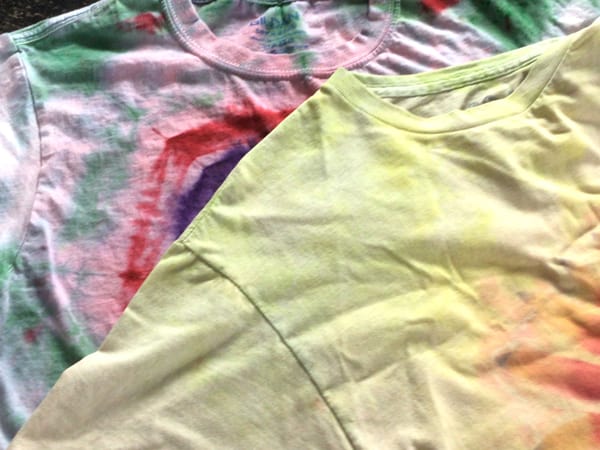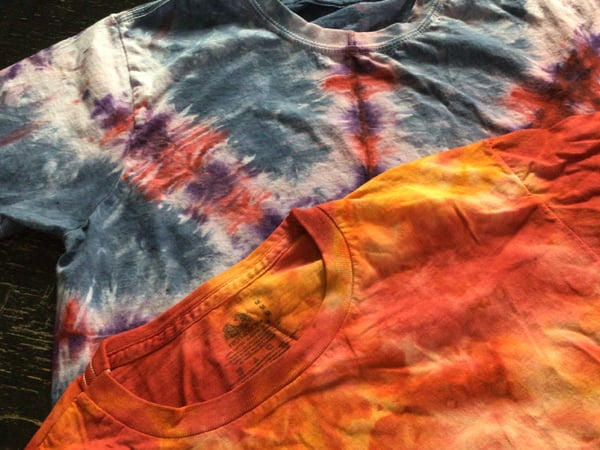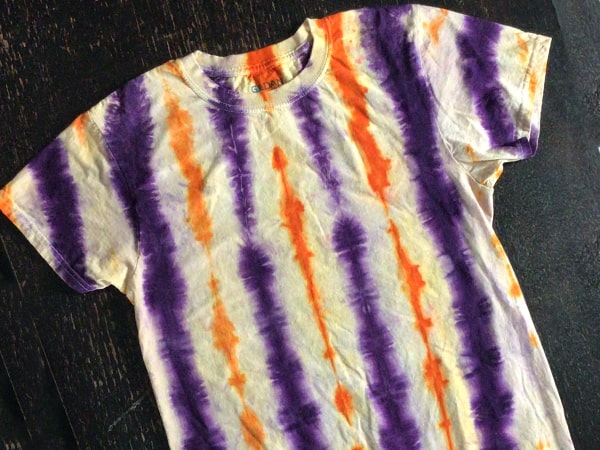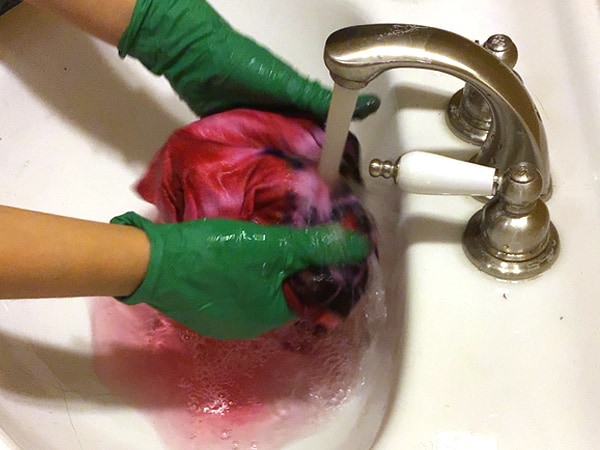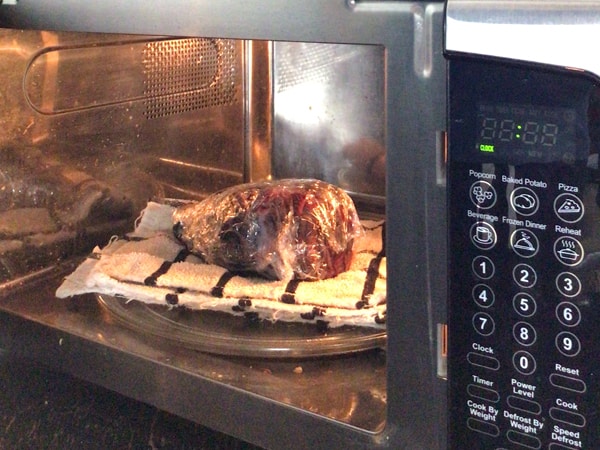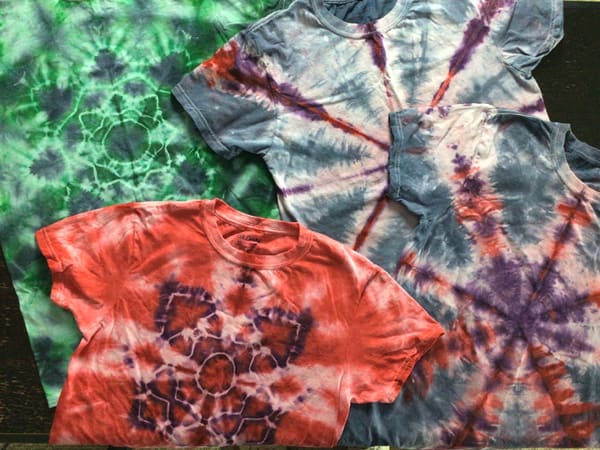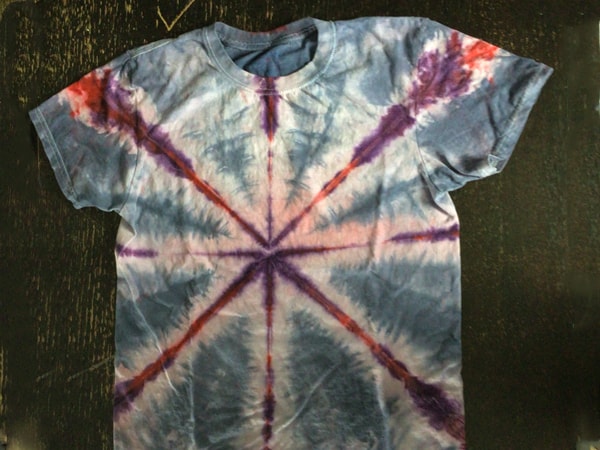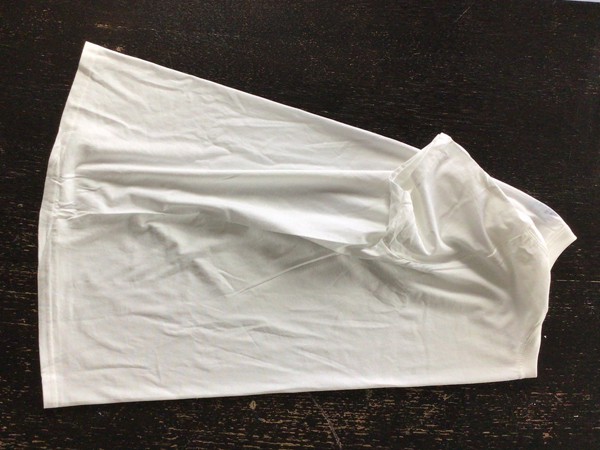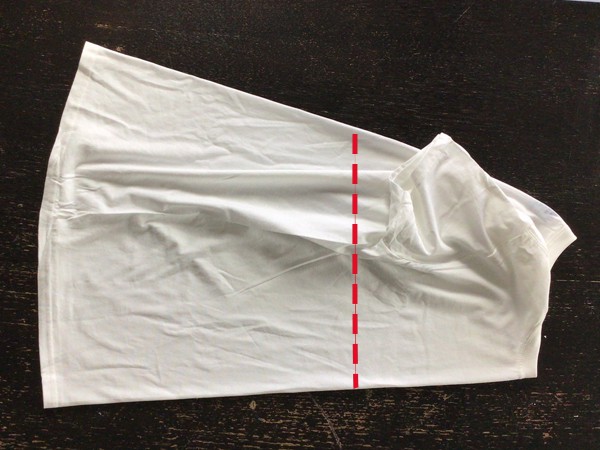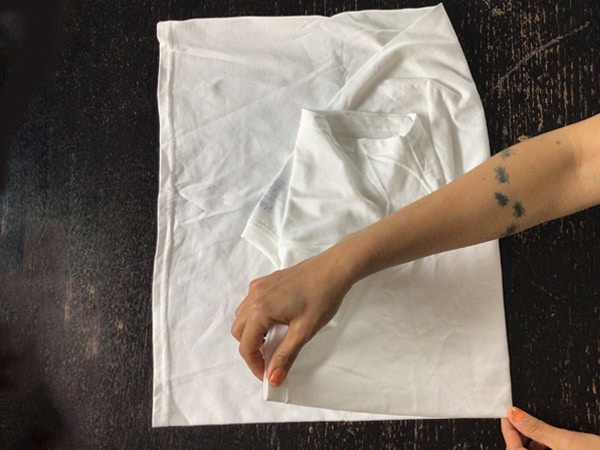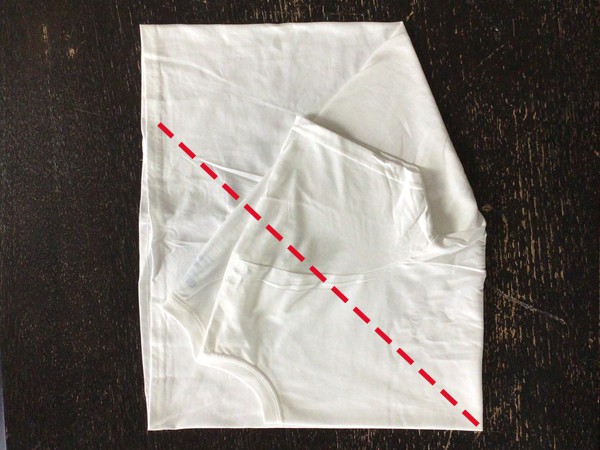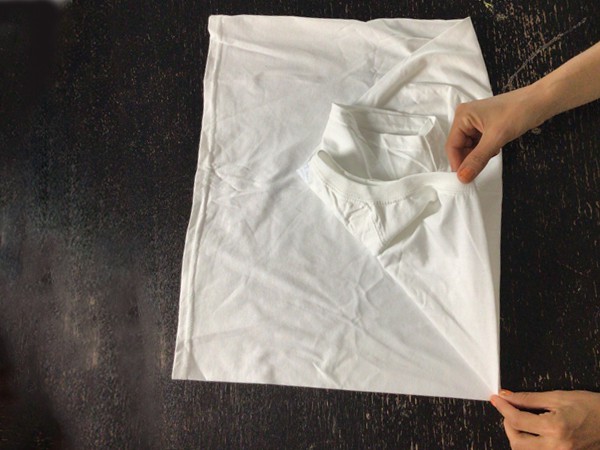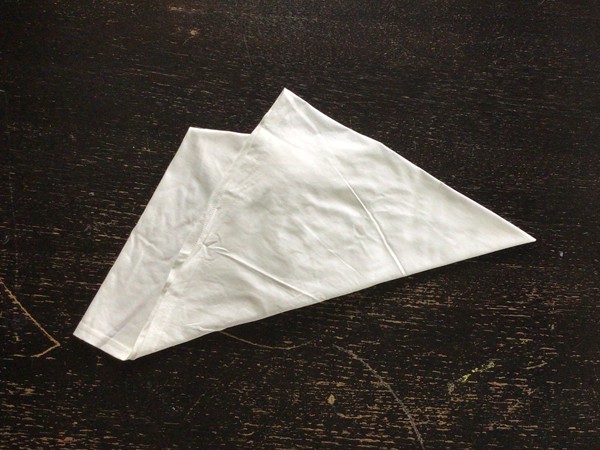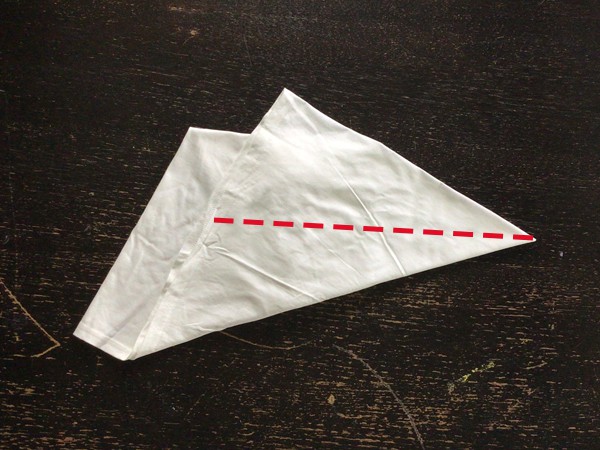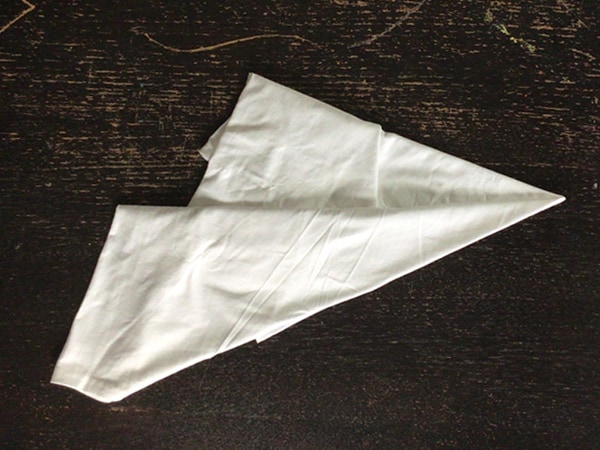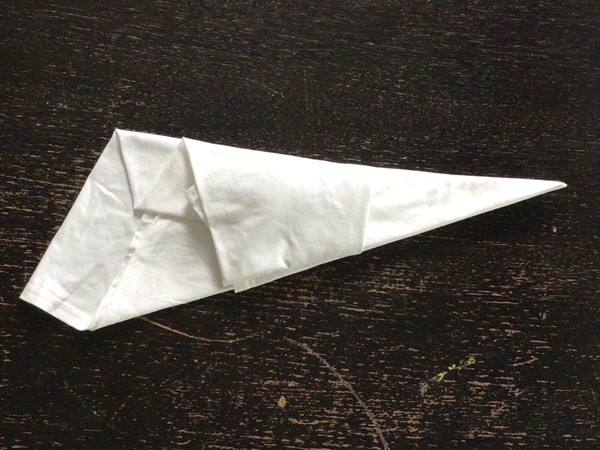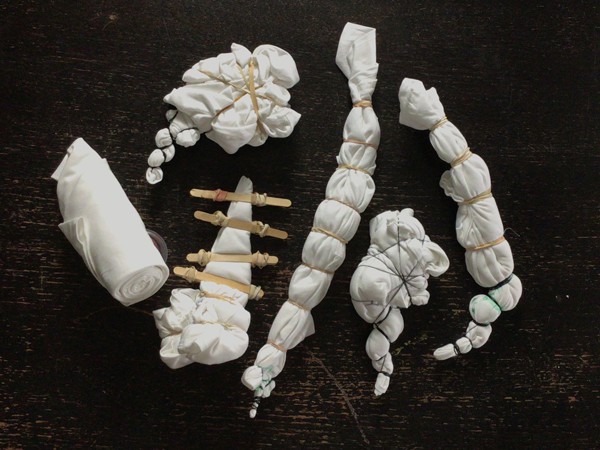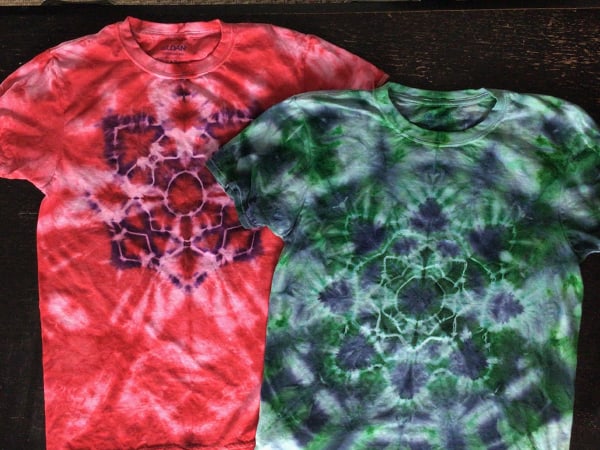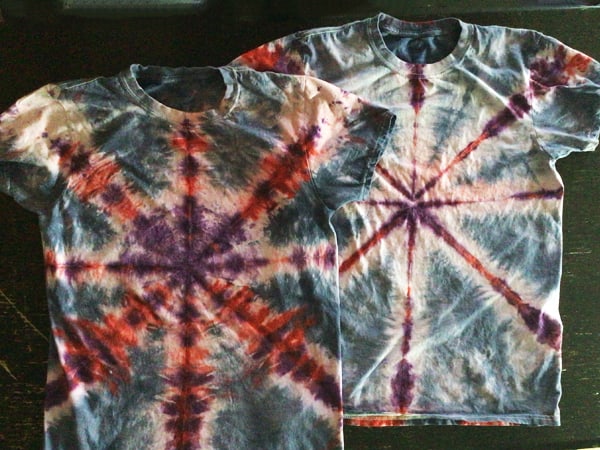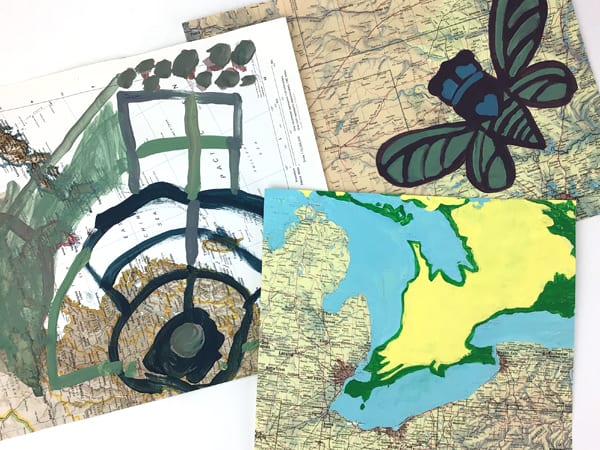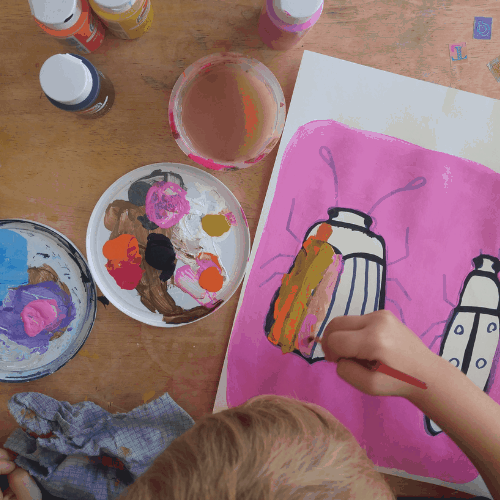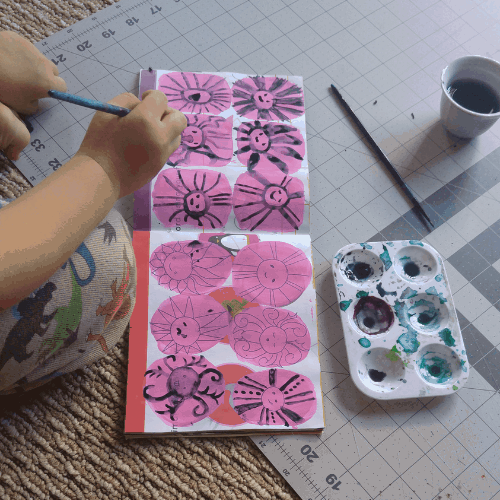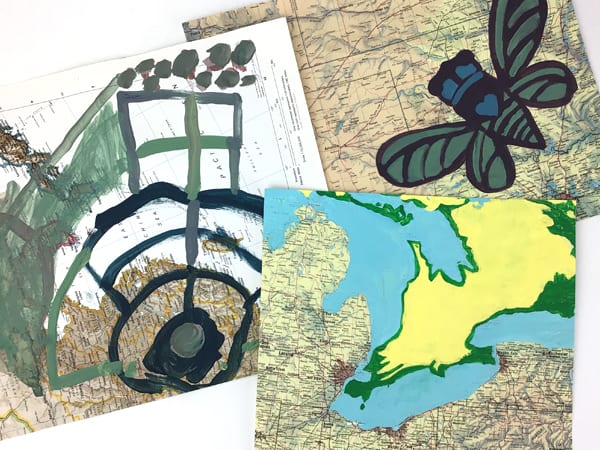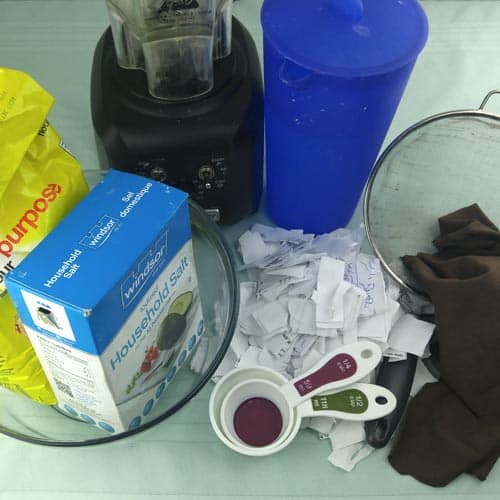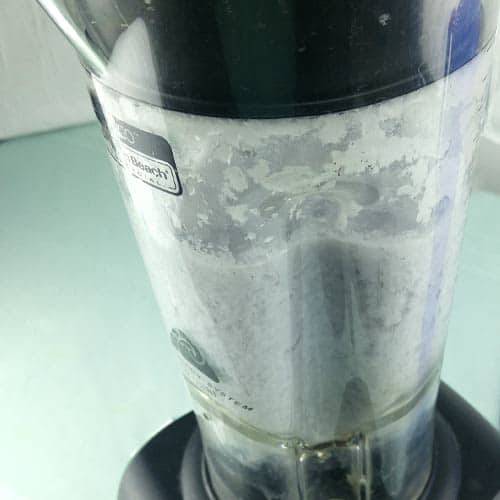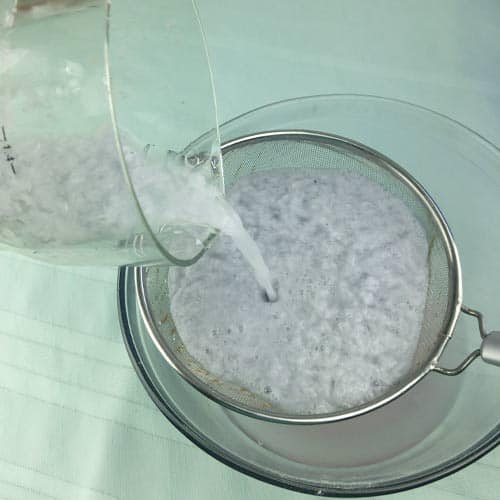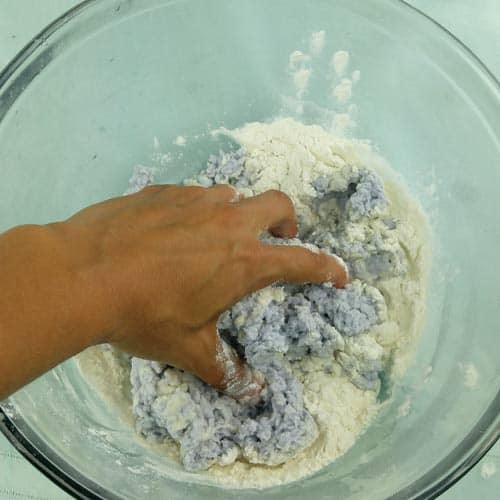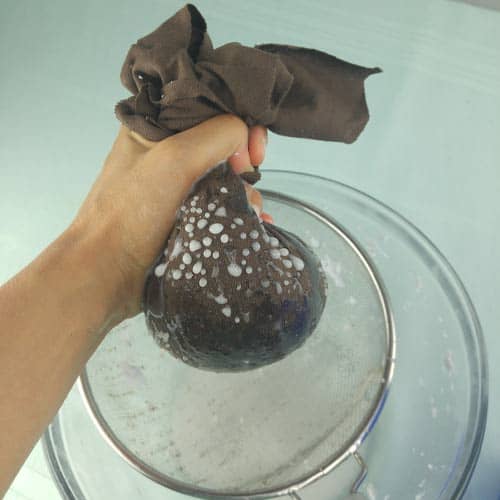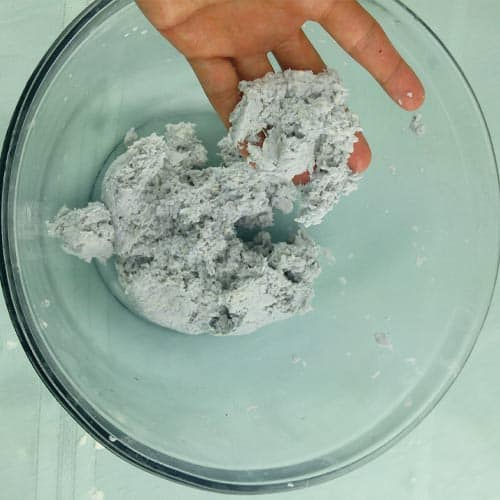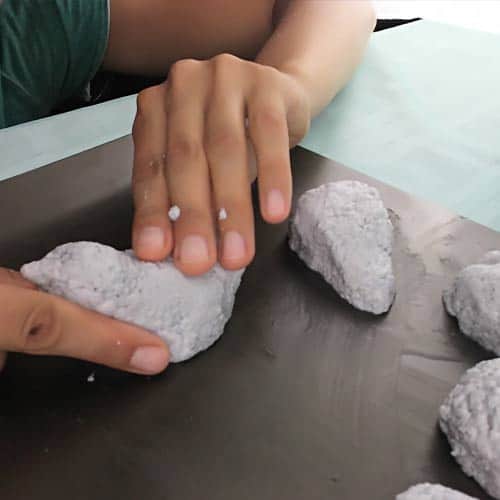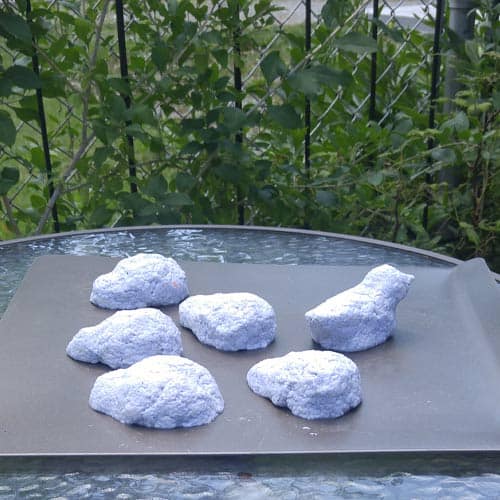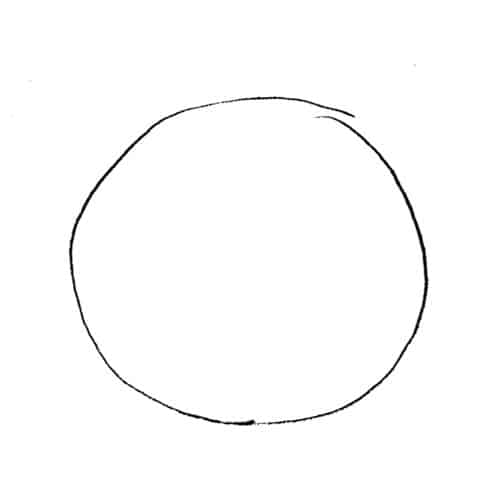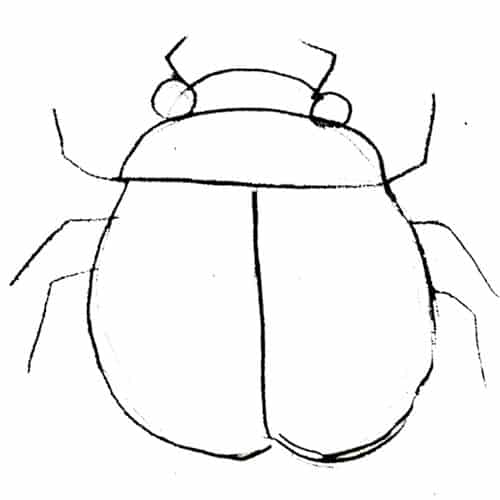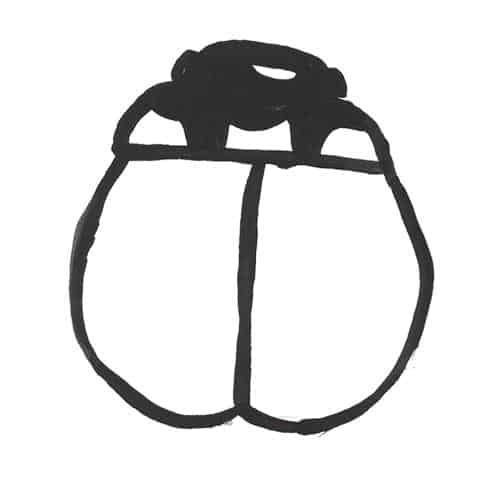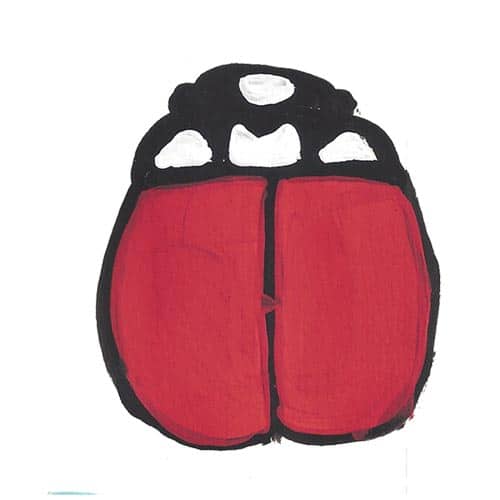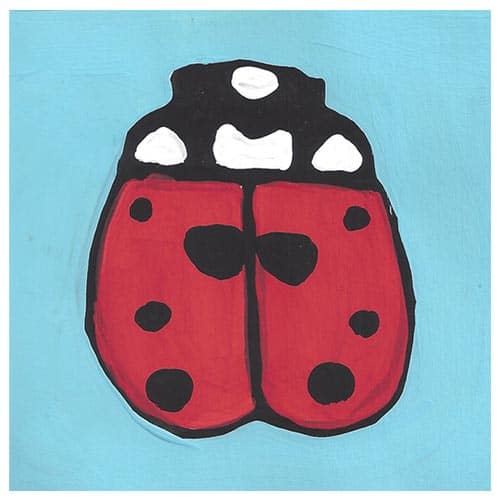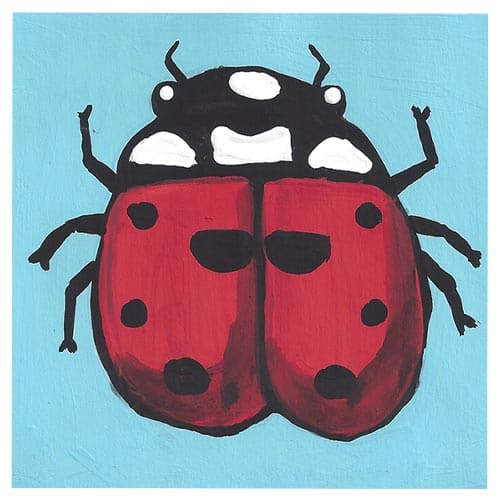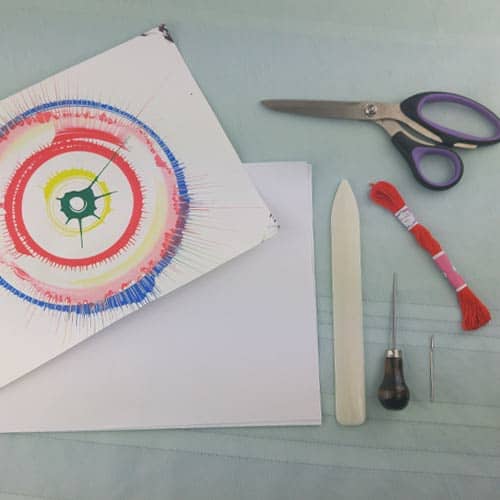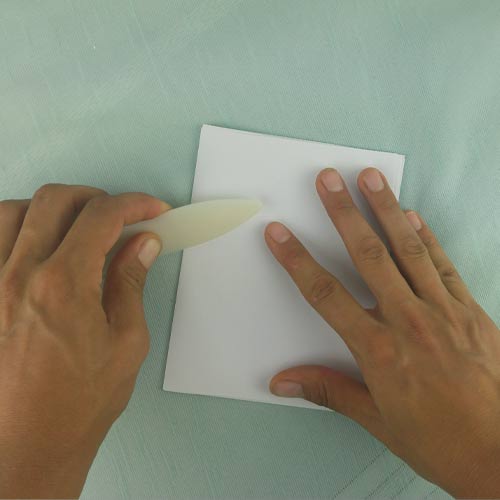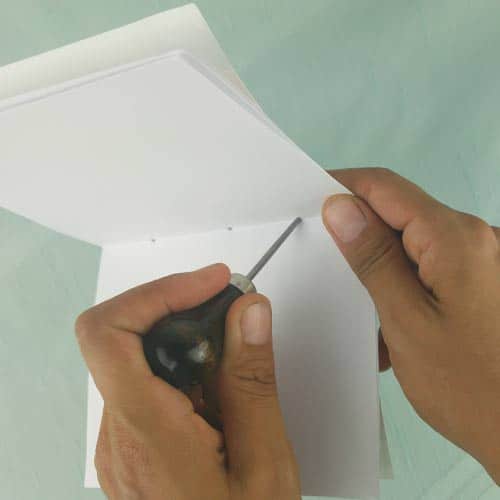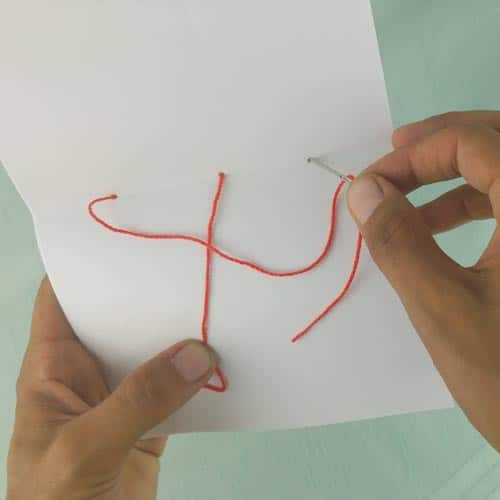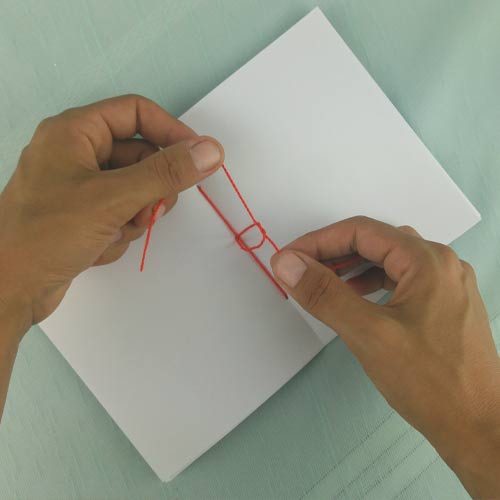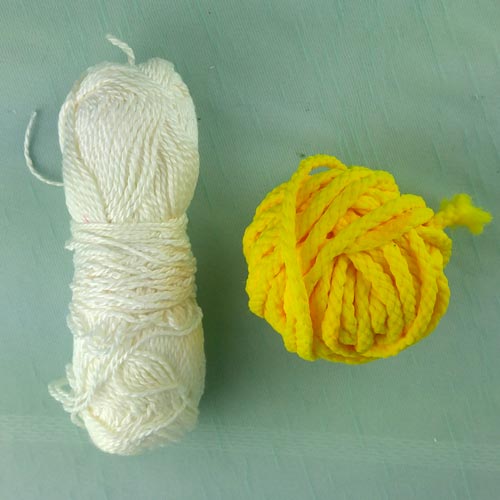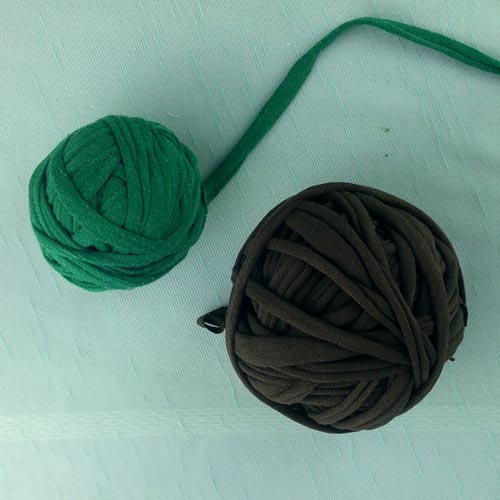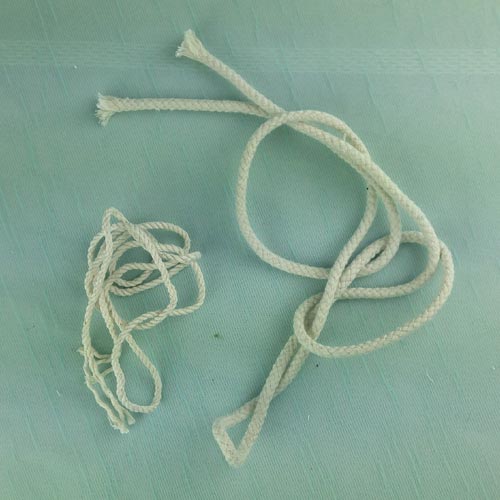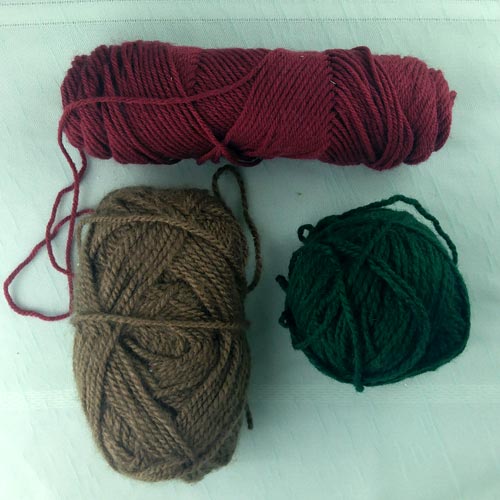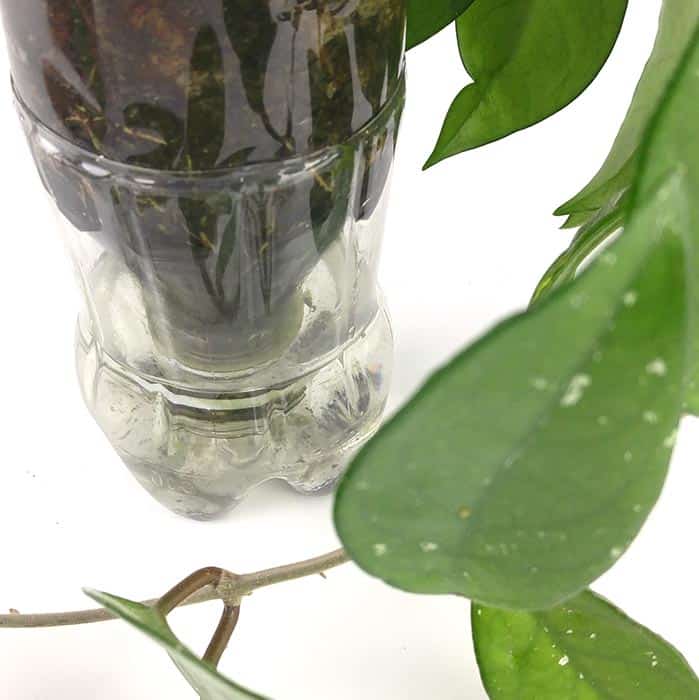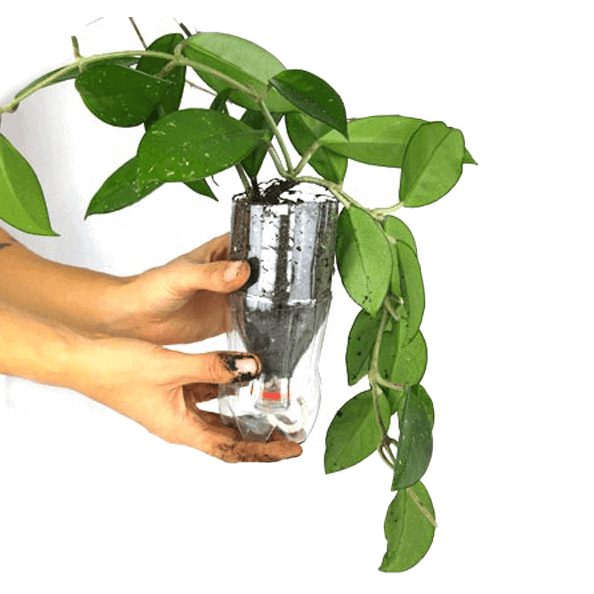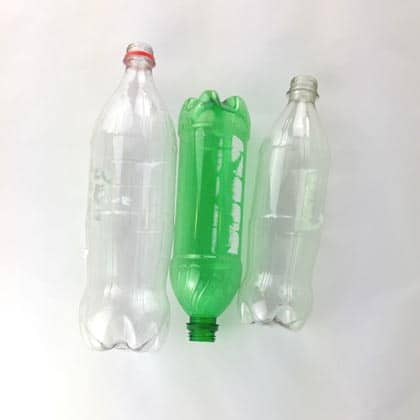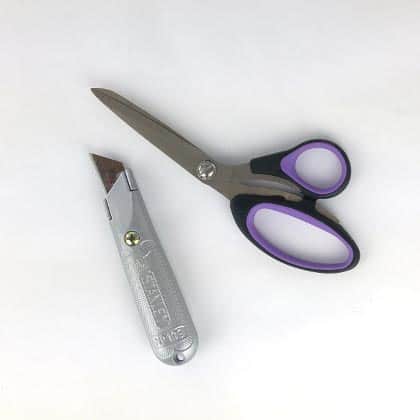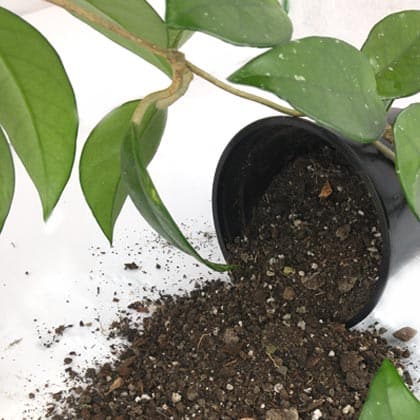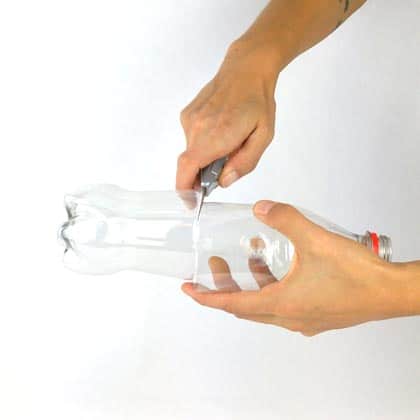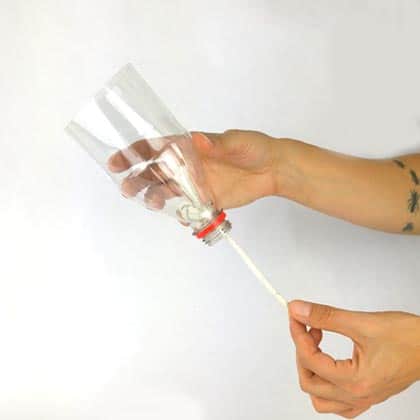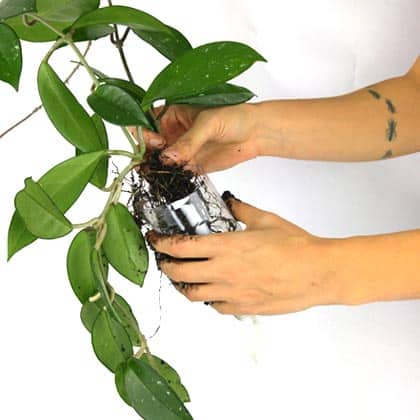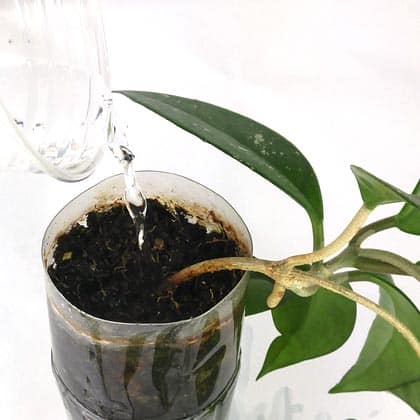Mandala tie dye is one of the designs that look super impressive but are actually quite easy. This design is a simplified version that uses only two colors, simplifies the tying process, and uses beginner-friendly Rit dyes* so that you can learn all the basic skills to do a more complicated design but still get an awesome result on your first try.
Because of the limited colors and simple mandala, this design is a subdued version of the often intricate colorful tie dye mandalas. This makes a t-shirt that is not too flashy while still being a beautiful impressive work of art.
*This article contains affiliate links. This means if you purchase a product through one of the links with an asterisk (*) I will get a small commission at no extra cost to you. This is how I cover the cost of running a website and can continue to create content. Read more about the companies I work with here.
How To Tie A Mandala for Tie Dye
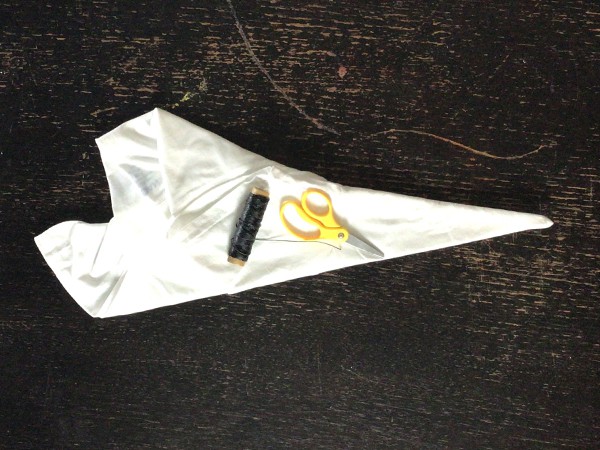
You need to start with a triangle fold. Since the triangle is the start for lots of tie dye projects I have the instructions for it on its own page. Learn how to make a triangle fold here.
You will also need some scissors and string. I like to use waxed thread* (which I use for bookbinding) because the wax helps keep the dye off the tied spots and makes it easier to pull super tight. You can make your own waxed thread or just use any regular sting as long as you pull it tight.
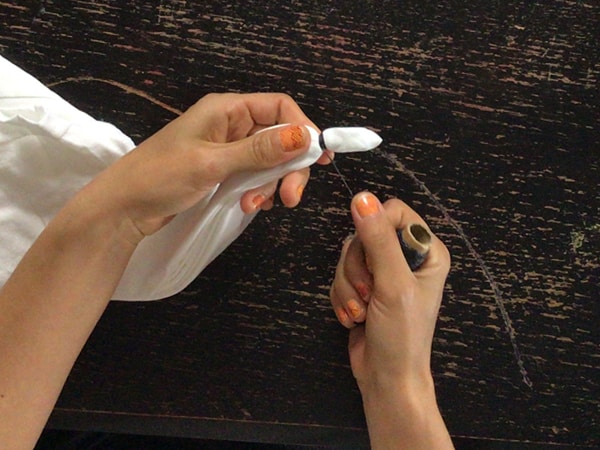
Make a slip knot and loop it around the point of the triangle. Pull tight. Wrap the thread around 5 to 20 times. The more times you wrap the thread the thicker the mandala design lines will be on the t-shirt.
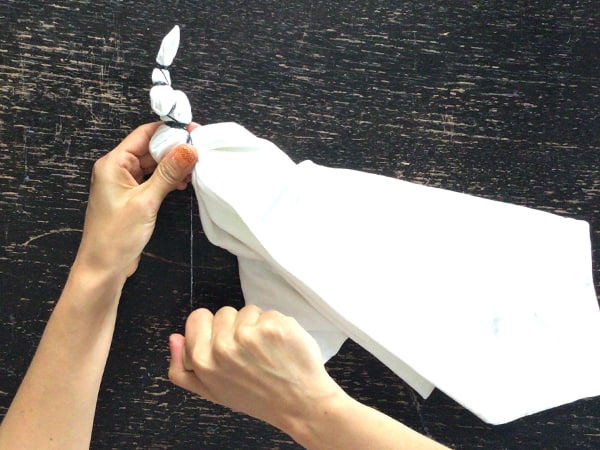
Move up the triangle a bit and begin wrapping. You can vary the angle of the wrapping and the distance between the wraps to make many interesting lines. The wraps can either touch or not (see the below picture where the first two wraps do not touch and the second two do to see what I mean).
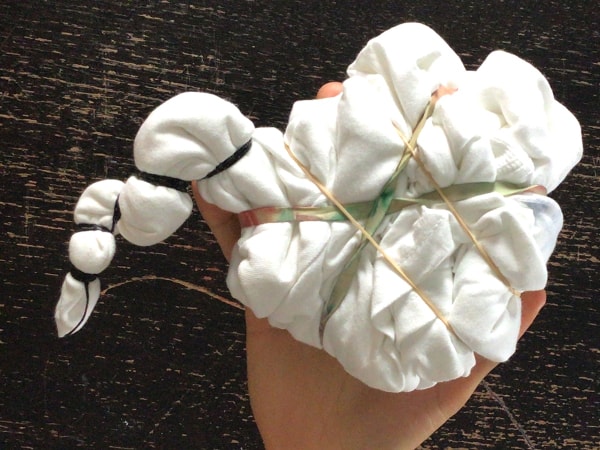
Once the mandala is all tied scrunch up the rest of the t-shirt and hold in place with the thread of with elastics. Try to keep the scrunches even to avoid big blotches of color or white in the final design. I like to keep the triangluar fold together as I scrunch so that the “sunburst” pattern can be seen even in the scrunched part of the shirt.
How To Dye A Mandala
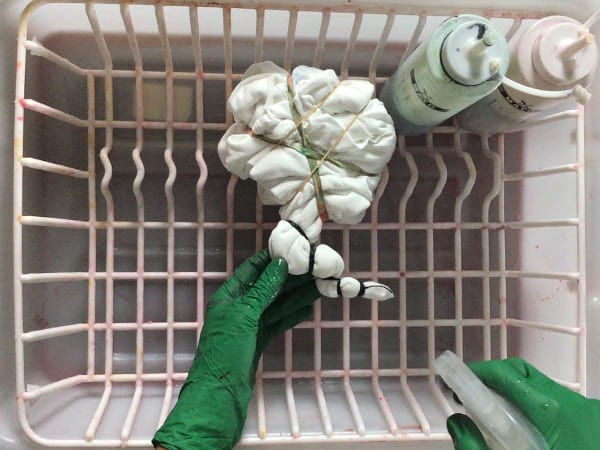
Lightly spray the shirt with water to break the surface tension allowing the water to penetrate the shirt. This will prevent the water from beading on the surface and dripping to areas that you do not want the dye.
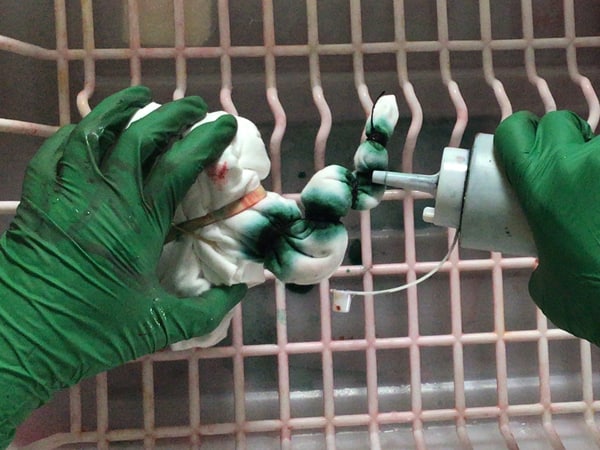
Start applying die on one side side of the shirt until you can see the dye bleed through the other side a bit. This will ensure even dye application on those hard to get to inside layers.
Add the green along the tied parts of the mandala. Apply the dye carefully trying to keep it along the lines as best as possible. Apply some dye and then wait for it to absorb before adding some more and keep in mind that the thicker parts at the top of the triangle will need a lot more dye that the bottom part.
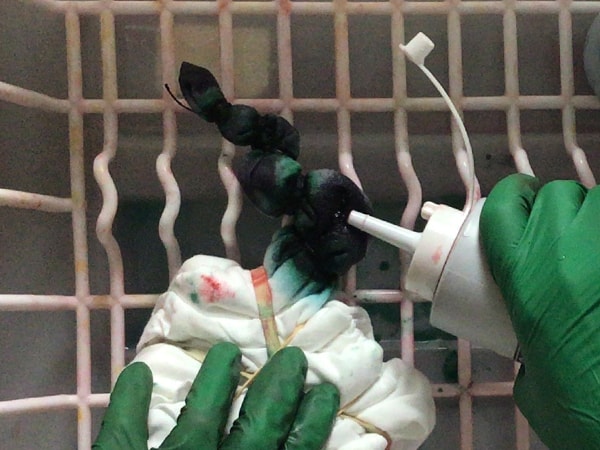
Now add the blue dye on the bulges. Continue to work on only one side and check the other side for when both the blue and green begin seeping through. It is fine to go back and forth between the colors as needed but try to apply the dye as carefully as possible.
Once you see the dye seeping through in multiple places flip the t-shirt over and repeat the process on the other side.
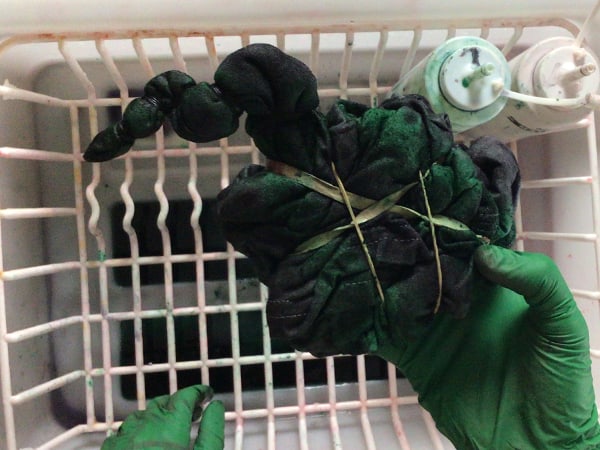
Dye the rest of the t-shirt. If you want the mandala to stand out more, dye this part only blue. I choose to dye it green and blue in a striped pattern. Whatever pattern you choose to dye here it will not be exact once the shirt is opened since it is all scrunched up.
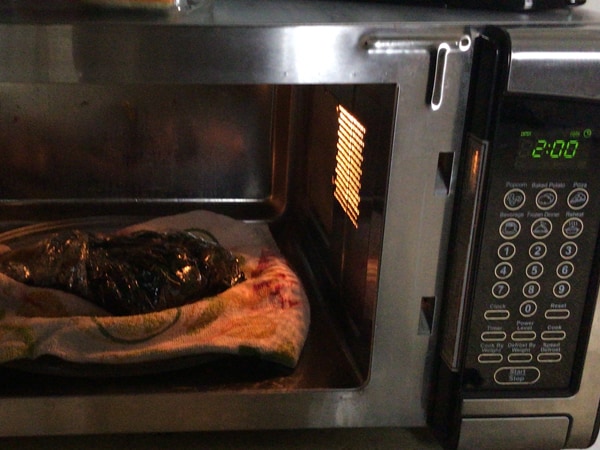
Wrap the wet tied t-shirt in plastic wrap, place it on a cloth, paper towel, or microwave safe dish and heat it for two minutes in the microwave.
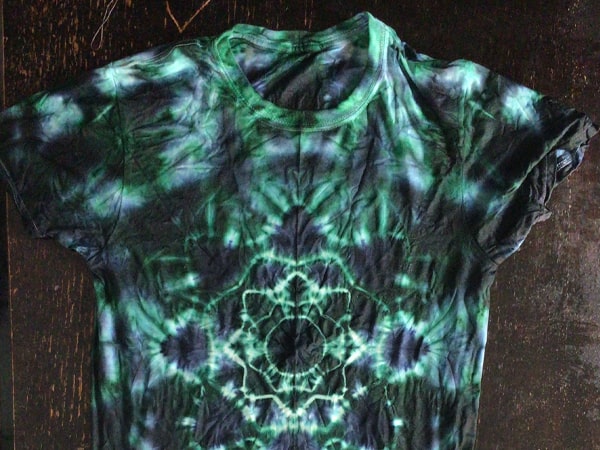
Unwrap to revel your design.
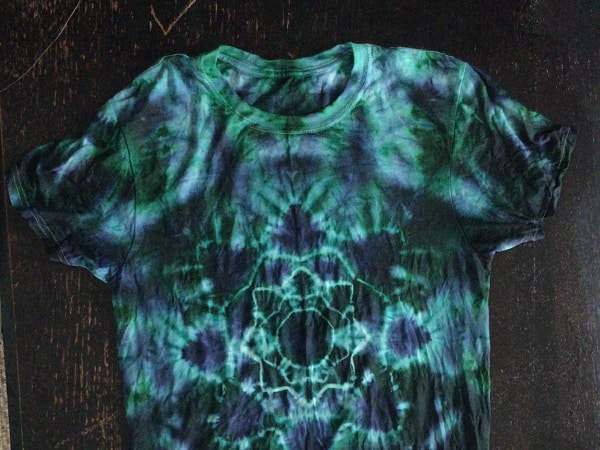
Rinse in cold water until the water runs clear. Rinse more in warm water until that also runs clear. Expect the colors to lighten a bit and to stain the white area. This is normal for Rit dyes.
Wash the shirt in cold water with mild detergent. The shirt may stain anything else it is washed with on the first wash so be cautious.
